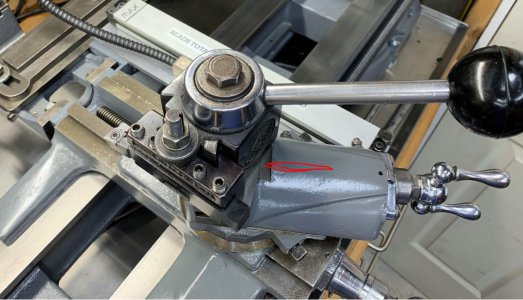- Joined
- Feb 26, 2014
- Messages
- 254
If you could post a pic of the steel finish that might be helpful. When cutting, how much material is sticking out of the chuck? If more that 3 times the dia. the end should be supported. Are you sure you are on center with the tool? if you take a facing cut does it leave a nub in the center? The spindle adjustment might have loosened. put an indicator on the chuck and try to move it. Trying HSS is a good move, but the insert type you have should work okay. I have a 12" 3/4hp Atlas and CCMT insert tooling works fine on steel as long as the nose radius is not too large. as others have said uplift on the carriage could be the culprit. I would test it with an indicator. I don't have any experience with 5C collet chucks. but it looks to me that there is an awful lot stick out with just the chuck and that may be a source of flex. Just for ****z and giggles try a 3 or 4 jaw chuck. Once you get this bug fixed though I think you will be very happy with the lathe.
Last edited:


